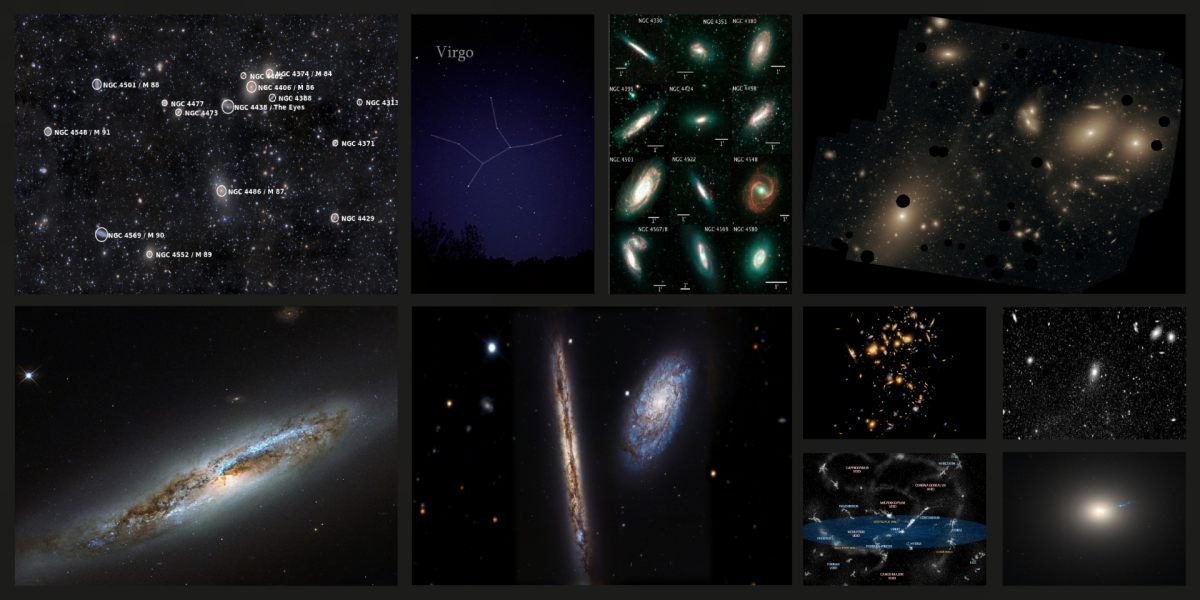
The evening sky in Springtime allows astronomers to view a large number of distant objects called galaxies, centred around the starry pattern of Virgo.
In this talk Dave Newton describes how the Virgo galaxy cluster is structured and explains what we are actually viewing, and:
- How this relates to our place in the Universe,
- How to successfully navigate through the cluster for yourself with a backyard telescope.
The Virgo galaxy cluster is familiar to amateur and professional astronomers alike, a rich collection of more than 1,300 galaxies, including dozens within the reach of relatively small telescopes.
Virgo is prominent in the spring sky in the northern hemisphere, visible all night in March and April. As the largest zodiac constellation, the Sun takes 44 days to pass through it, longer than any other.
The bright star Spica makes it easy to locate Virgo, as it can be found by following the curve of the Big Dipper/Plough to Arcturus in Boötes and continuing from there in the same curve (“follow the arc to Arcturus and speed on to Spica”).
The Virgo Cluster is a large cluster of galaxies whose center is 53.8 ± 0.3 Mly (16.5 ± 0.1 Mpc) away in the constellation Virgo.
Comprising approximately 1300 (and possibly up to 2000) member galaxies, the cluster forms the heart of the larger Virgo Supercluster, of which the Local Group (containing our Milky Way galaxy) is a member. The Local Group actually experiences the mass of the Virgo Supercluster as the Virgocentric flow. It is estimated that the Virgo Cluster’s mass is 1.2×1015 M☉ out to 8 degrees of the cluster’s center or a radius of about 2.2 Mpc.
Many of the brighter galaxies in this cluster, including the giant elliptical galaxy Messier 87, were discovered in the late 1770s and early 1780s and subsequently included in Charles Messier‘s catalogue of non-cometary fuzzy objects. Described by Messier as nebulae without stars, their true nature was not recognized until the 1920s.
When Who Where
- Date: Sunday 17th May 2021,
- Time: 7pm.
- Speaker: Dave Newton; SAS Founding member, SAS Honorary member, Former SAS President.
- Venue: Via Zoom (due to Pandemic Social Distancing Restrictions, login details will be issued near the date of the talk).
Our speaker
Dave Newton; SAS Founding member, SAS Honorary member, Former SAS President.
Dave is one of the our founding members of the SAS and is keen observational astronomer and is also interested in Astronomy outreach.






